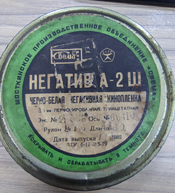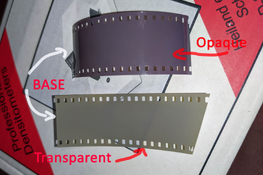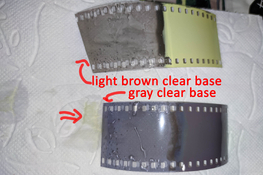Wolfram Malukker
Subscriber
Well, it was a pain in the butt to get on the reel until I figured out why it was falling out of the spirals, but once I figured that out I had a good handle on it. I shot this roll of A-2SH as a test, to evaluate how I wanted to shoot it and develop it. I still have a few frames left that I cut out of this roll, I decided to not push my luck and blind-cut the film and managed to get it RIGHT between two frames! Bet that never happens again.
These frames are shot in sequence, on the same roll of film, developed in the same tank, at the same time. Development was D76 undiluted for 13 minutes, constant agitation for 1 minute, then 10 seconds every minute after that. Running water stop bath for 1 minute, fix with Kodak Harding Non-Rapid fixer for 7 minutes, Legacy Hypo-Clear for 2 minutes, then a 10:30 second running water rinse, a dunk in photoflow, and hang up to dry.
This is 400ASA, the "rated" film speed.

Again, same shot, same camera, same lens, 320ASA:

And again, at 250ASA:

And the last shot at 200ASA:

The developer poured out bright lemon yellow, but other than that no big difficulties in development. I loaded the camera in complete darkness, which was a bit of a pain because of the 0.06mm film base.
What does everyone think? The metal wall behind the tables and benches is a light blue color, the brick is red, and the concrete blocks are a light grey. The tables are all treated lumber, and the benches are untreated pine. The tarp down against the wall is an old silver tarp.
I did not shoot a color chart, but I did shoot some indoor shots in the machine shop, and some shaded shots in the greenhouse. All other shots on the roll were taken at 400ASA, and I can post them as I get them scanned.
These frames are shot in sequence, on the same roll of film, developed in the same tank, at the same time. Development was D76 undiluted for 13 minutes, constant agitation for 1 minute, then 10 seconds every minute after that. Running water stop bath for 1 minute, fix with Kodak Harding Non-Rapid fixer for 7 minutes, Legacy Hypo-Clear for 2 minutes, then a 10:30 second running water rinse, a dunk in photoflow, and hang up to dry.
This is 400ASA, the "rated" film speed.

Again, same shot, same camera, same lens, 320ASA:

And again, at 250ASA:

And the last shot at 200ASA:

The developer poured out bright lemon yellow, but other than that no big difficulties in development. I loaded the camera in complete darkness, which was a bit of a pain because of the 0.06mm film base.
What does everyone think? The metal wall behind the tables and benches is a light blue color, the brick is red, and the concrete blocks are a light grey. The tables are all treated lumber, and the benches are untreated pine. The tarp down against the wall is an old silver tarp.
I did not shoot a color chart, but I did shoot some indoor shots in the machine shop, and some shaded shots in the greenhouse. All other shots on the roll were taken at 400ASA, and I can post them as I get them scanned.
















